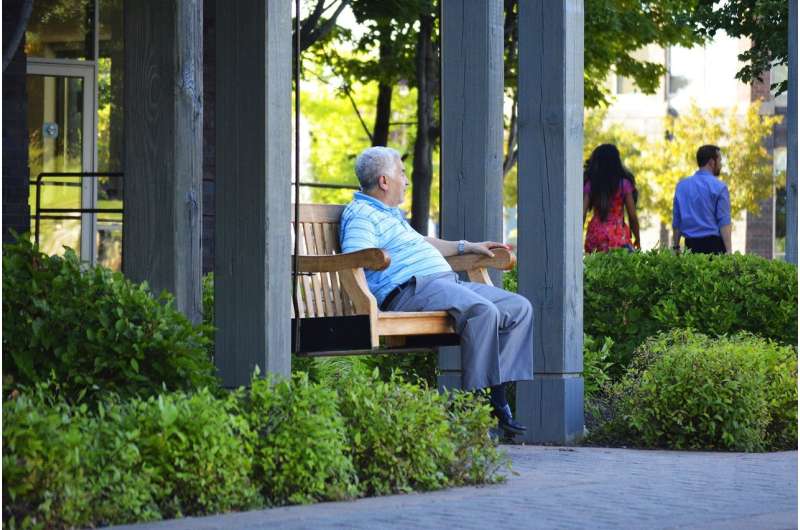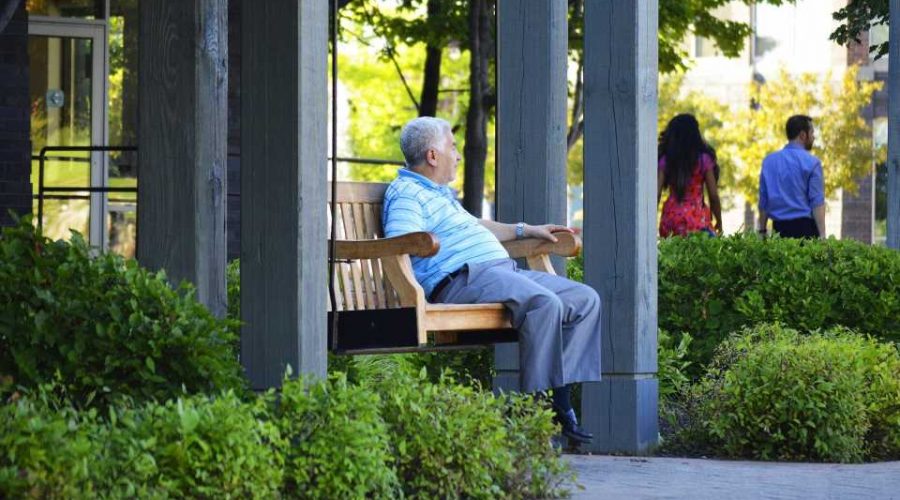High COVID-19 rates in older Latinos linked with economics, outside help

Older Latinos are among the groups hardest hit by COVID-19 infection and death, yet research on the factors behind these disparities has been limited.
A new study suggests that economic hardships that were exacerbated by the pandemic and reliance on people outside their households for assistance with everyday tasks may have heightened older Latinos’ exposure to the virus.
A team led by social work professor Lissette Piedra at the University of Illinois Urbana-Champaign compared the effects of material hardship and three potential sources of exposure to the virus for 263 Latinos with those of 1,913 non-Latino whites. All of the subjects participated in the National Social Life, Health and Aging Project, a population-based study of community-dwelling adults born between 1920-1965.
Nearly 25% of the Latinos in the NSHAP study reported that they or another household member had been diagnosed with COVID-19, compared with 7% of non-Latino whites and 9% of the total sample.
To examine material hardship, participants were asked how the pandemic had affected their finances and ability to pay their bills. Prior to the pandemic, 91% of the Latinos reported that they had enough income to meet or exceed their basic needs. However, during the pandemic, that number dropped to 66%.
Of the exposure factors the research team examined—which included household size, reliance on outside help and experiencing a work change during the pandemic—outside help was significantly associated with COVID-19 diagnoses within the Latinos’ households.
Latinos’ occupations also increased their risk of exposure to COVID-19 and put them at greater risk of job or income loss, according to the study. Latinos are overrepresented among essential workers in frontline industries such as grocery stores, building cleaning services and trucking, according to the U.S. Department of Agriculture and the Center for Economic and Policy Research.
Older Latinos who reported being worse off financially because of a change in work status such as a job loss or reduced hours were 10 percentage points more likely to have a person in their household diagnosed with COVID-19 than people who said they were better off financially or about the same.
“The job losses and social disruptions associated with the pandemic exacerbated the economic hardships that older Latinos already faced,” Piedra said. “The inability to pay the rent, mortgage and other bills on time may have motivated older Latino adults to take greater health risks, such as turning to work in informal economic networks that may be less likely to adhere to public health mandates.”
Living conditions were another potential source of exposure to COVID-19, since Latinos tend to live in dense neighborhoods and in larger, multigenerational households—often with their grandchildren—that make social distancing difficult, according to the study.
Accordingly, older Latinos were twice as likely as other people in the sample to have a household member who was diagnosed with COVID-19, the researchers found. And significantly more older Latinos than non-Latino whites—45% versus 37%—reported that they had friends and family members not living with them who were diagnosed with the disease.
Although older Latinos in the study were less likely to see family during the pandemic than were whites, they were more than twice as likely to receive help with everyday tasks from someone outside their household—another potential source of exposure to the virus.
Published in the Journal of Applied Gerontology, the study was co-written by senior research scientist Melissa J.K. Howe, research analyst John Francis, research scientist Yadira Montoya and senior research analyst Melissa Gutwein, all of the NORC at the University of Chicago.
Source: Read Full Article
